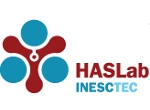Transforming data between different formats is an essential task in computer science and software engineering. Ordinary as this exercise may seem, creating a target artifact from a source artifact a is often just the first step in a dynamic evolution process: the initial transformation implicitly binds a and b, and as either artifact gets updated, modifications must be propagated to the other side in order to keep the overall system consistent. For decades, this kind of problem has been addressed via ad hoc or domainspecific techniques in virtually every area of computer science—the view-update problem from the database community being the classic example. However, in the last few years, research on bidirectional transformation (Czarnecki et al., 2009) has exploded, with developments in areas like heterogeneous data synchronization (Brabrand et al., 2005; Kawanaka and Hosoya, 2006; Foster et al., 2007), string manipulation (Bohannon et al., 2008; Barbosa et al., 2010), functional languages (Matsuda et al., 2007; Voigtländer, 2009; Pacheco and Cunha, 2010), model transformation (Ehrig et al., 2007; Cicchetti et al., 2010; Macedo and Cunha, 2013), user interfaces (Meertens, 1998; Huet al., 2008), relational databases (Bancilhon and Spyratos, 1981; Dayal and Bernstein,1982; Bohannon et al., 2006), graph transformation (Schürr, 1994; Hidaka et al., 2010), or spreadsheet systems (Cunha et al., 2012; Macedo et al., 2014c). The main idea behind bidirectional transformation frameworks is having a single transformation artifact denote the transformations in both directions (either by construction or through calculation), avoiding the cumbersome and error-prone task of manually writing and maintaining two coherent transformations.


